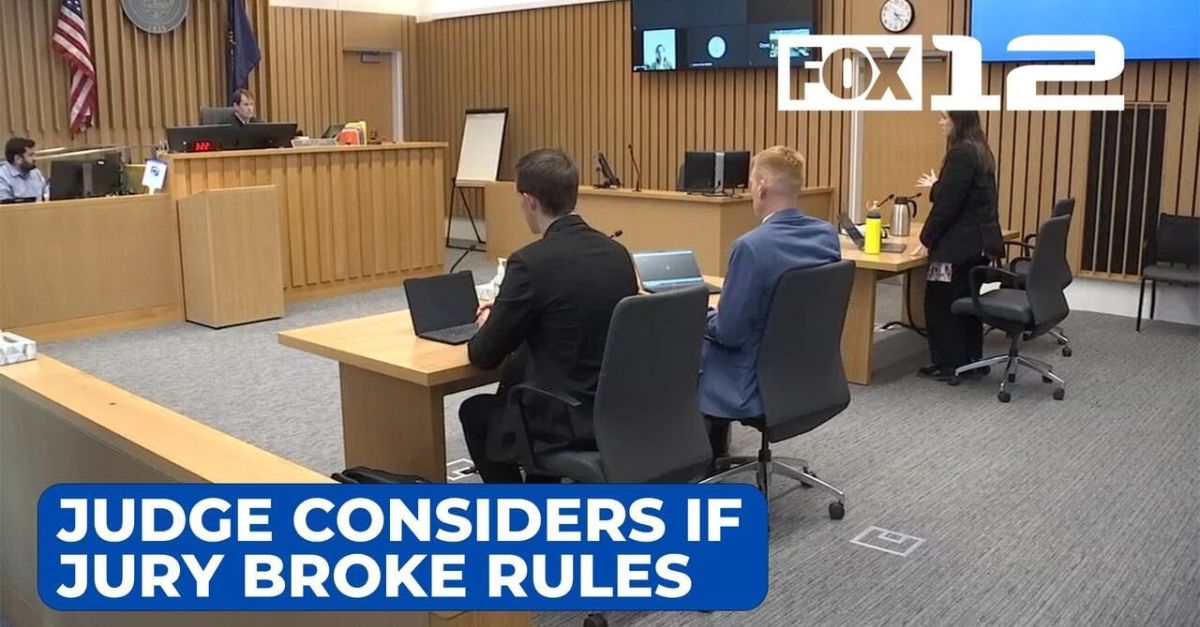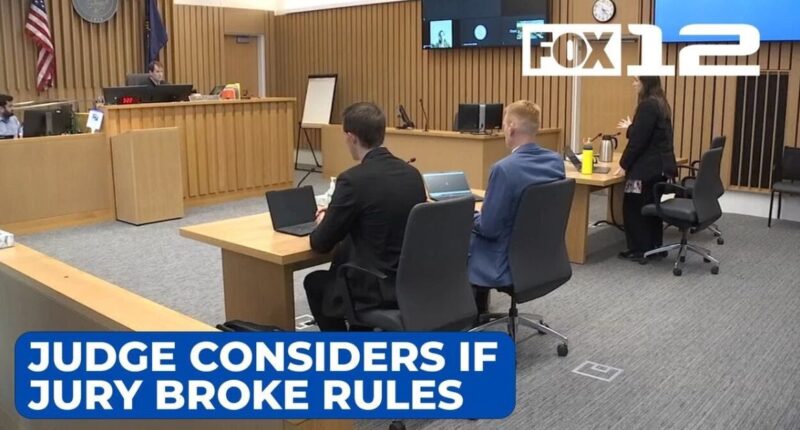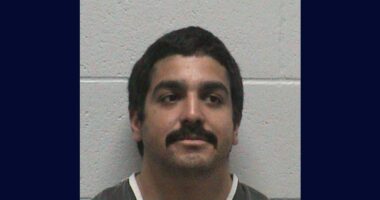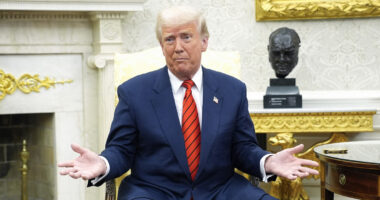
Judge David F. Rees from Multnomah County Circuit Court is examining arguments regarding a convicted murderer’s request for a new trial. The individual claims that the jury tampered with surveillance video footage during the trial.
Lawyers for a convicted murderer want an Oregon judge to throw out their client’s guilty verdict after a juror came forward saying the jury enhanced video footage in order to come to its decision.
The jury on Oct. 30 convicted Colby Benson of second-degree murder in the September 2020 shooting death of Christopher Klein in Portland. Multnomah County Circuit Court Judge David F. Rees sentenced Benson, 40, to life in prison with the possibility of parole after 25 years.
Case closed? Not so fast, said Benson’s attorney Rian Peck. Peck filed a motion for a new trial after a juror contacted him with concerns about how the jury came to its conclusion.
According to Juror No. 35, the panel was reviewing surveillance video from the scene on the computer provided to them by the court.
During the trial, prosecutors presented surveillance video from a nearby gas station, apartment and public transportation system showed Benson leaving Klein’s home and firing rounds at the victim in his car. However, some felt the footage was not clear enough.
“There was not a lot of movement in our deliberations just from watching the videos in their original format, and I personally still felt very strongly that the appropriate verdict was not guilty,” Juror No. 35 wrote in the Nov. 25 declaration obtained by Law&Crime.
The juror said a fellow juror Googled how to zoom in on video on the software they were using.
“Through the Google results, the juror who was operating the computer was able to zoom in on various videos, isolate frames and view clips in an enhanced way to see things previously not apparent,” the juror wrote.
In the end, the jury voted to convict, and the zoomed-in video was “pivotal” in helping jurors reach the verdict, Peck said in his motion. Peck argues that the video enhancement violates the universal instruction given to all jurors that they are not to conduct their own research on case and they are to come to their verdict based solely on the evidence presented at trial.
Juror No. 35 came to regret the decision to enhance the video.
“After having time to reflect, I now believe it was improper for us to have been Googling how to manipulate this footage and I believe that our verdict should have been based on the evidence as presented,” the juror wrote. “I do not believe we would have been able to reach a unanimous verdict, but for the enhancements that were being done to these videos by jurors in real time during deliberations. Had I only viewed the videos in their original format, I never would have changed my vote to guilty.”
But prosecutors don’t believe the jury violated any instructions, arguing that jurors did not manipulate any video, but merely zoomed in on it.
“It would be no different had they asked to play the video on the large monitor in court instead of allegedly making a portion of the video larger on the smaller monitor they had during deliberations,” wrote Multnomah County Deputy District Attorney Samuel Wilton, according to The Oregonian.
Juror No. 35 also claimed to have left Rees a note claiming “the State did not meet their burden of proof, we did it for them.”
From the order:
The Court needs evidence regarding what software, if any, was downloaded and used by the jury, and if so, what the impact of that software would have on the video evidence in the record. For example would the software fill in pixels to enhance zoomed images? To that end, juror witnesses (in addition to juror 35) will be required to determine: (1) whether the software was in fact downloaded and used by the jury; (2) if software was downloaded and used, exactly what software was downloaded and used; (3) what does the software in fact do to video evidence to allow the viewer zoom in and manipulate the video; and (4) what impact the use of any video manipulation software had on the jury deliberations.












